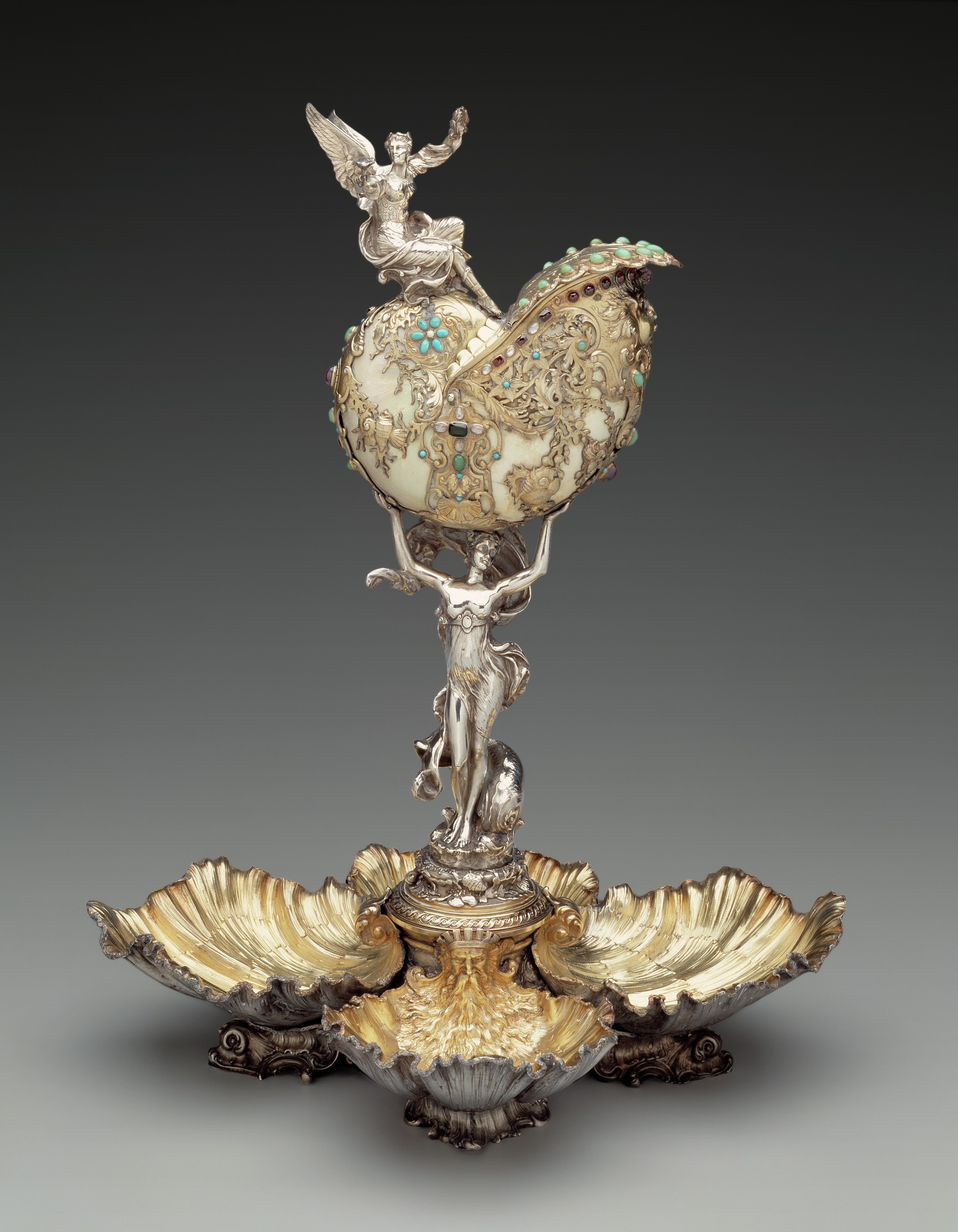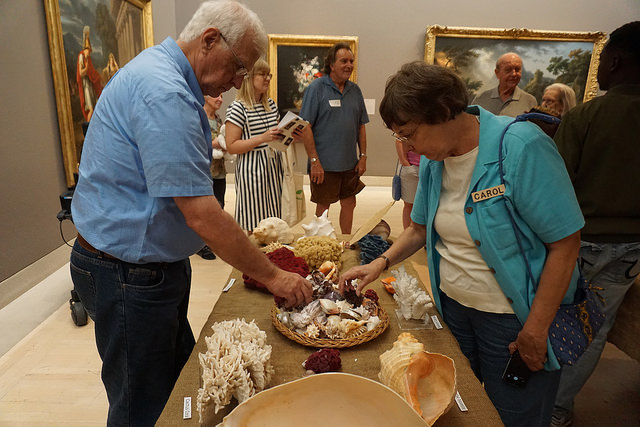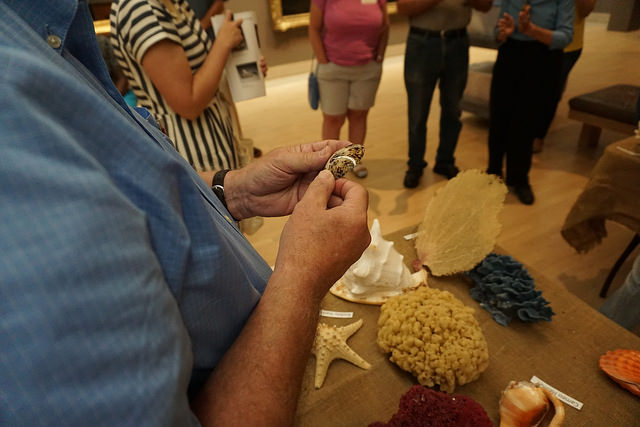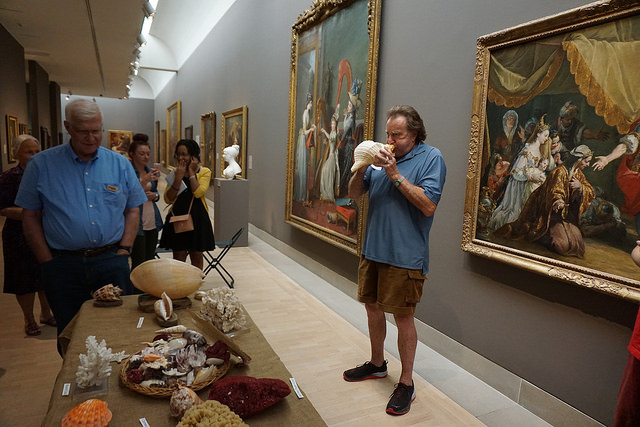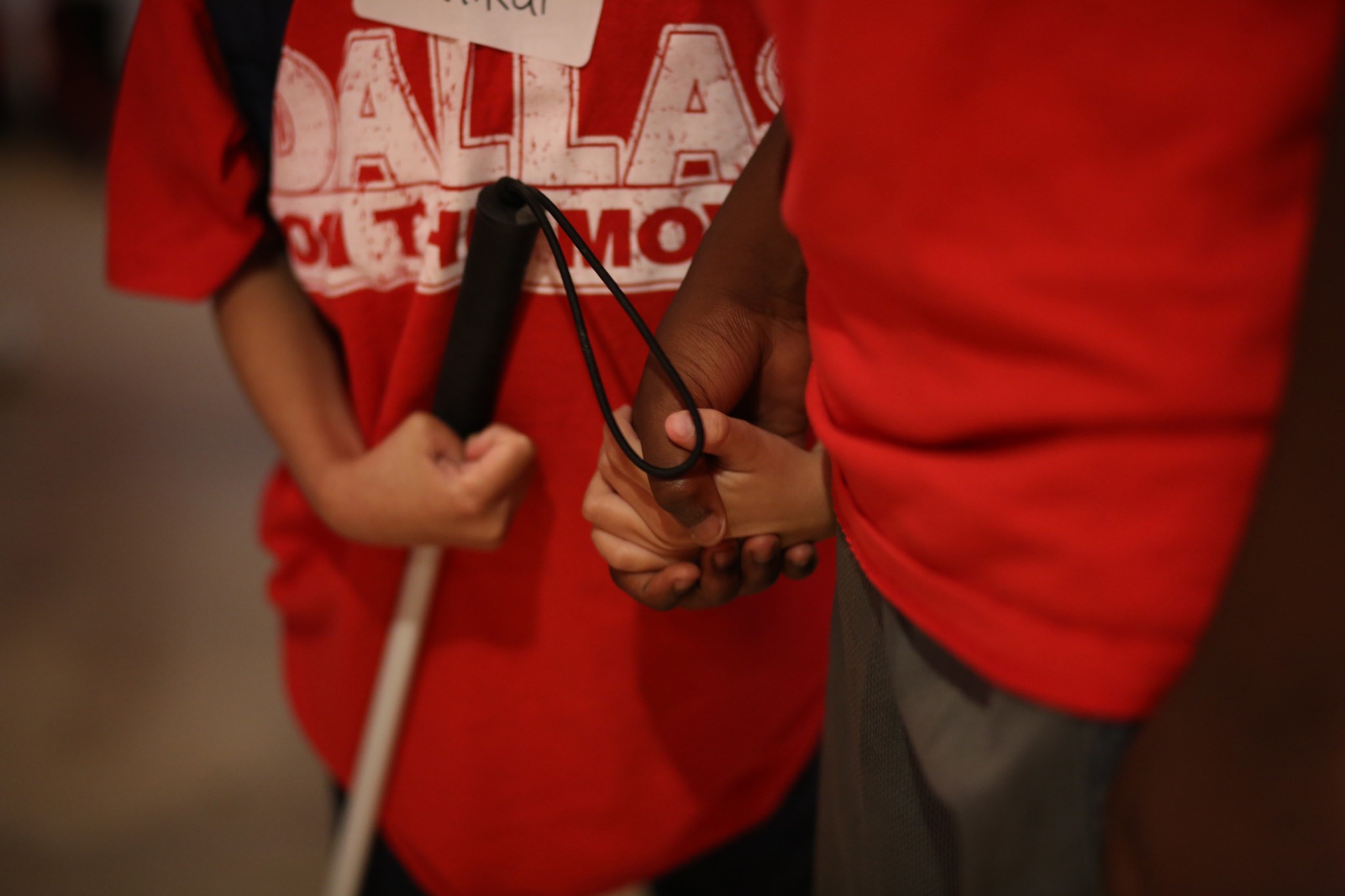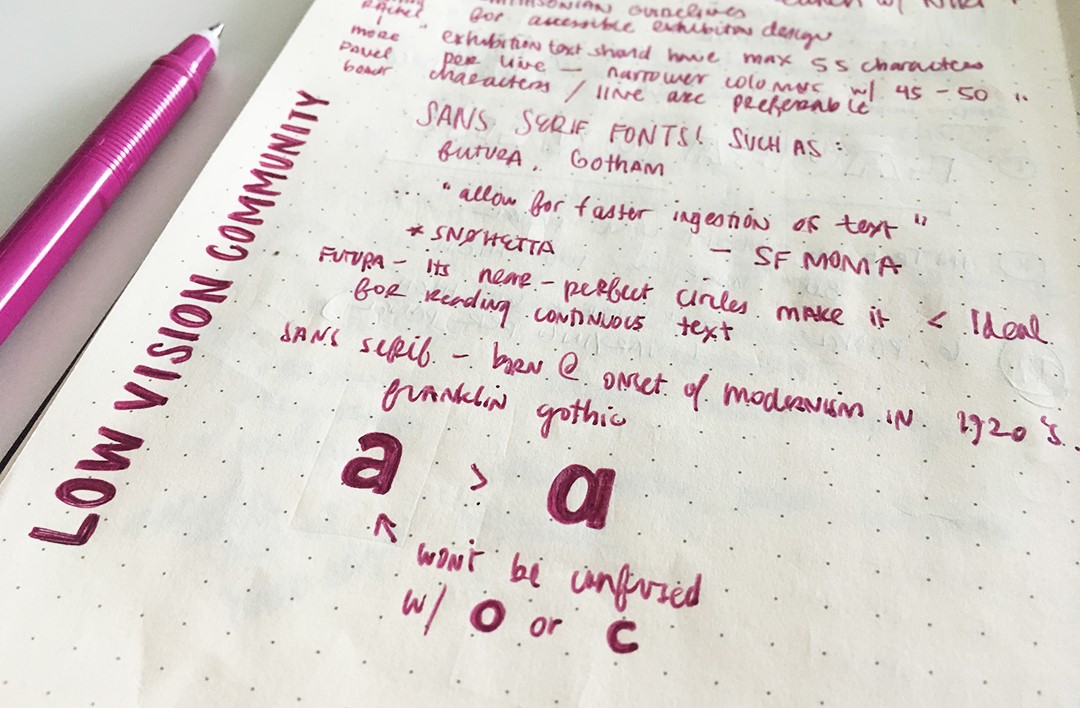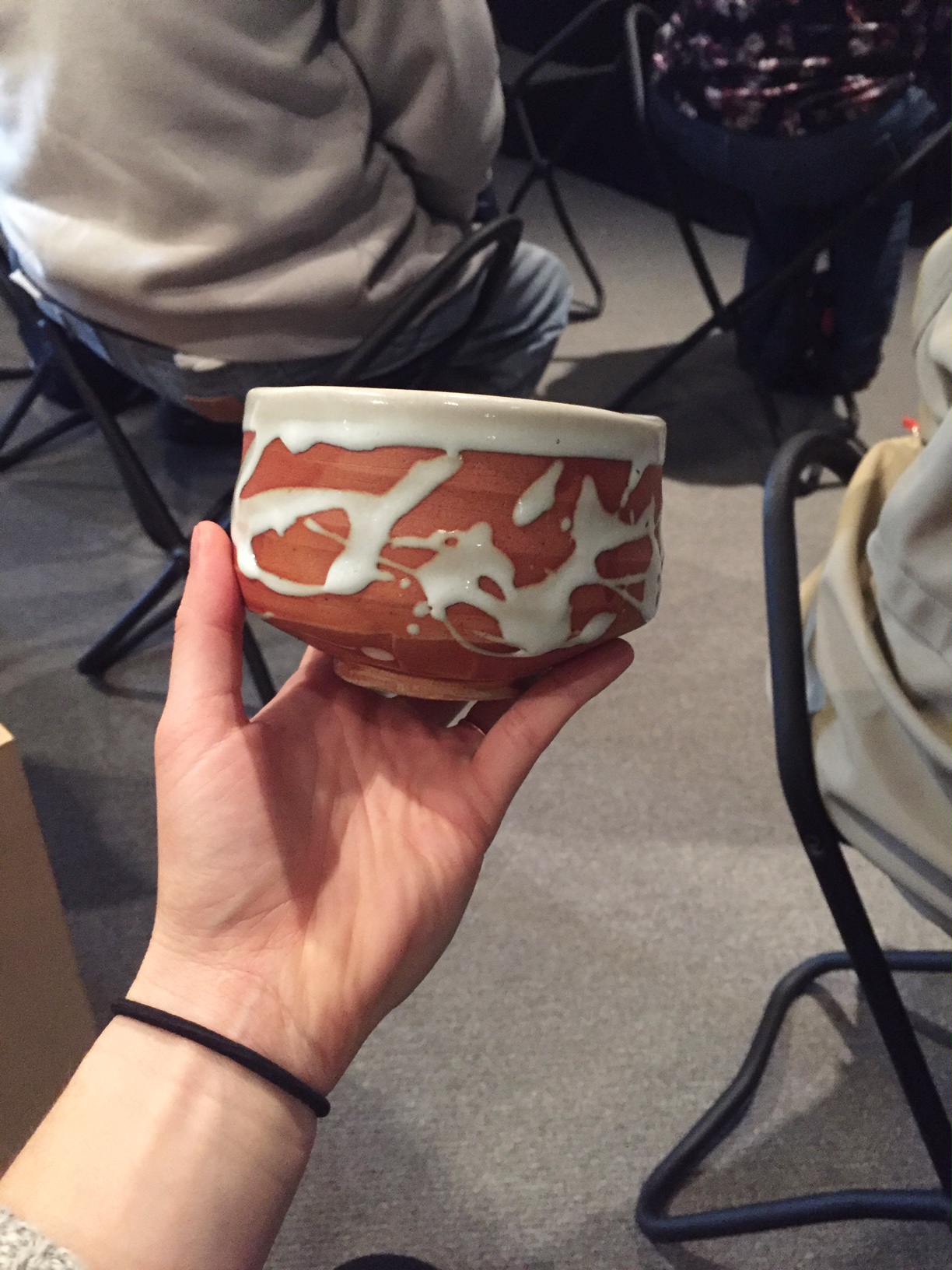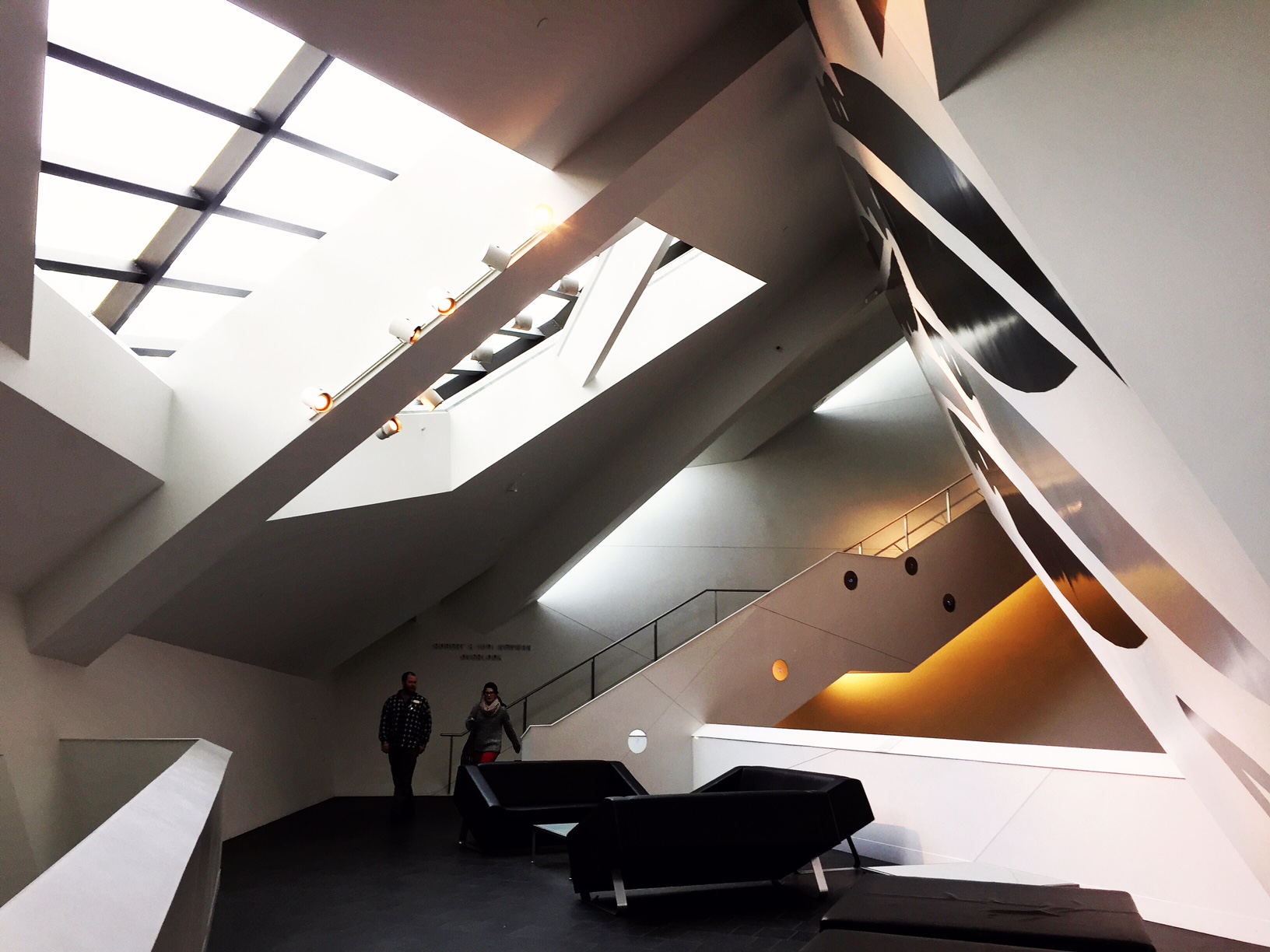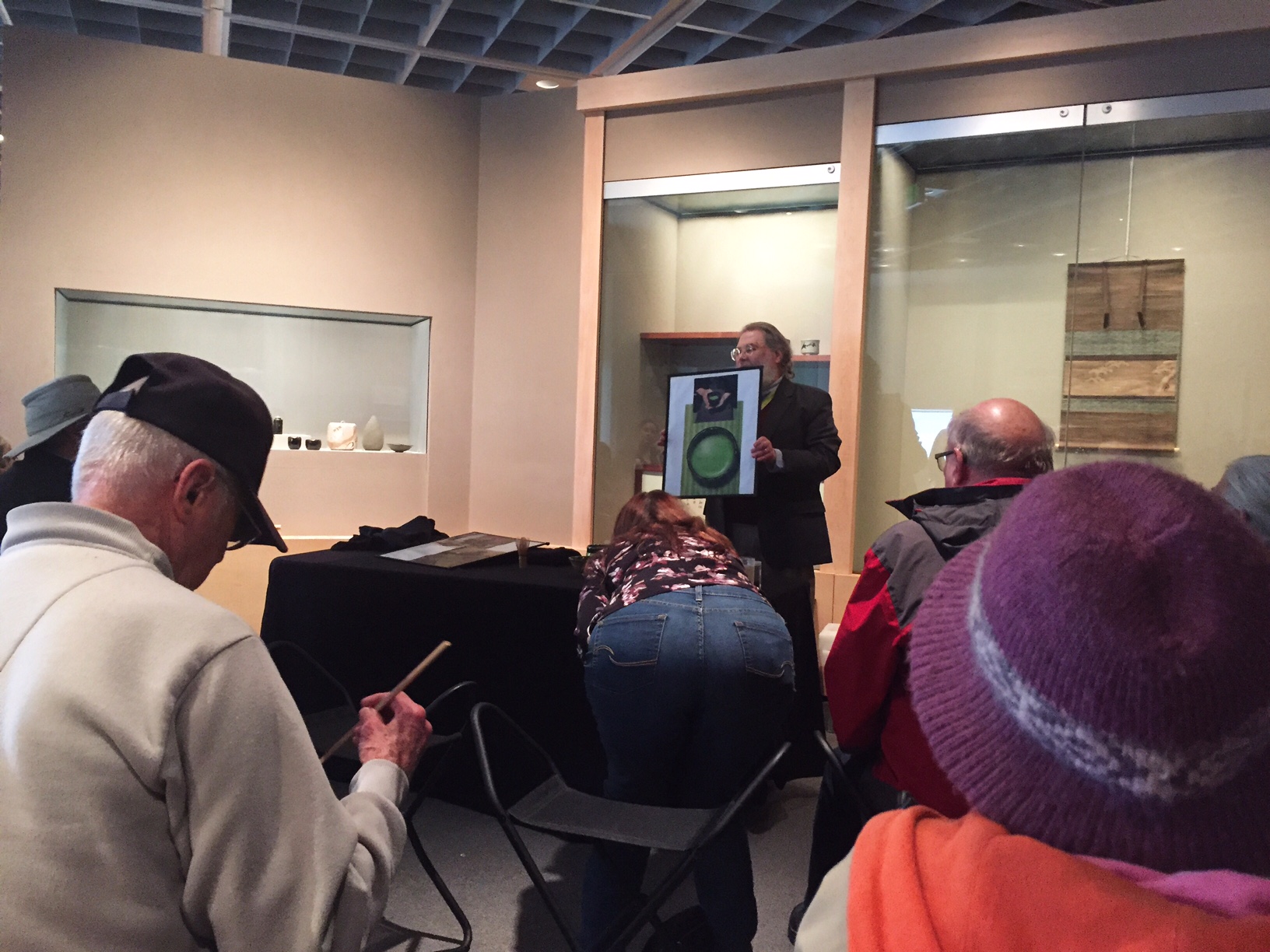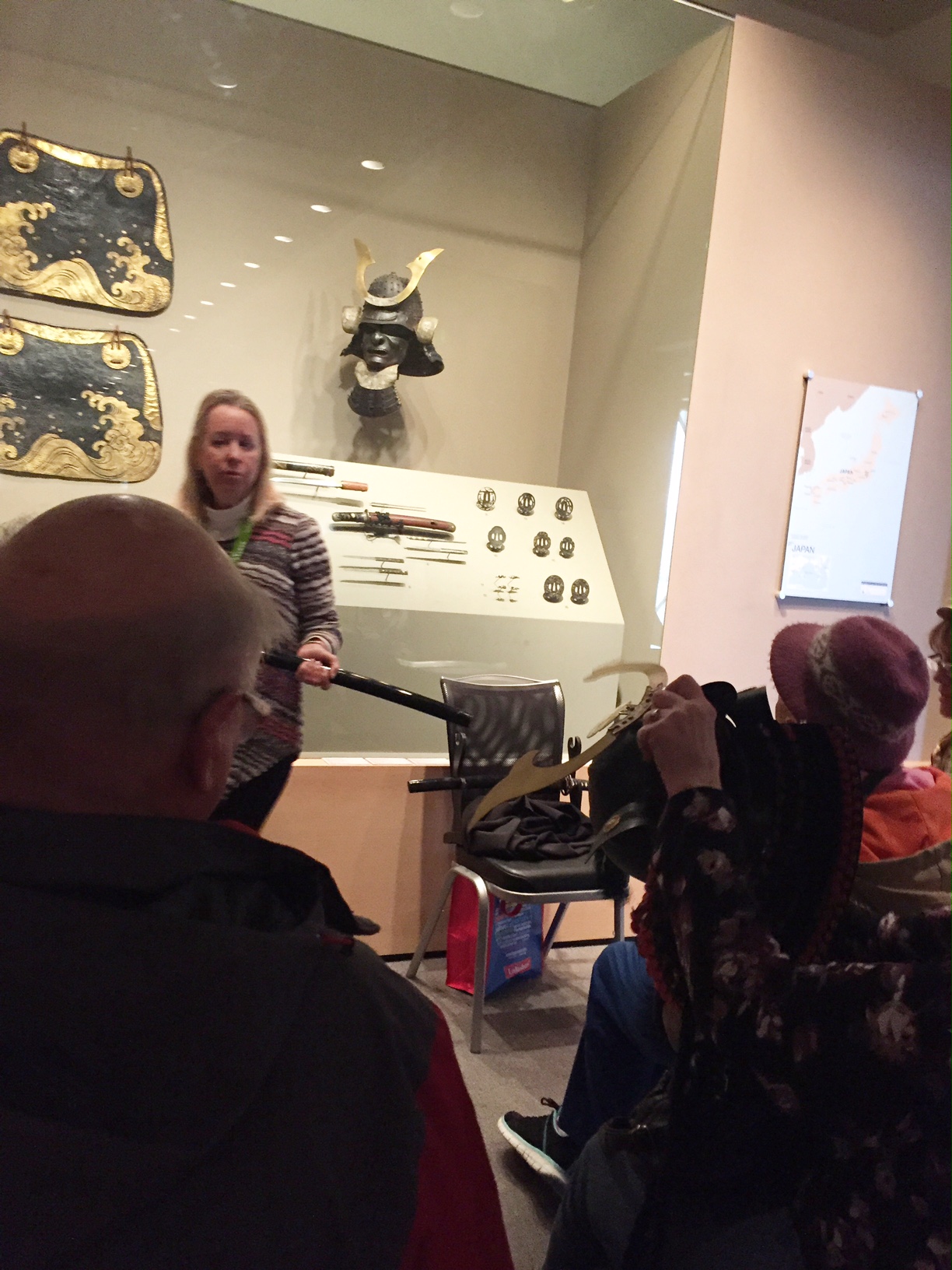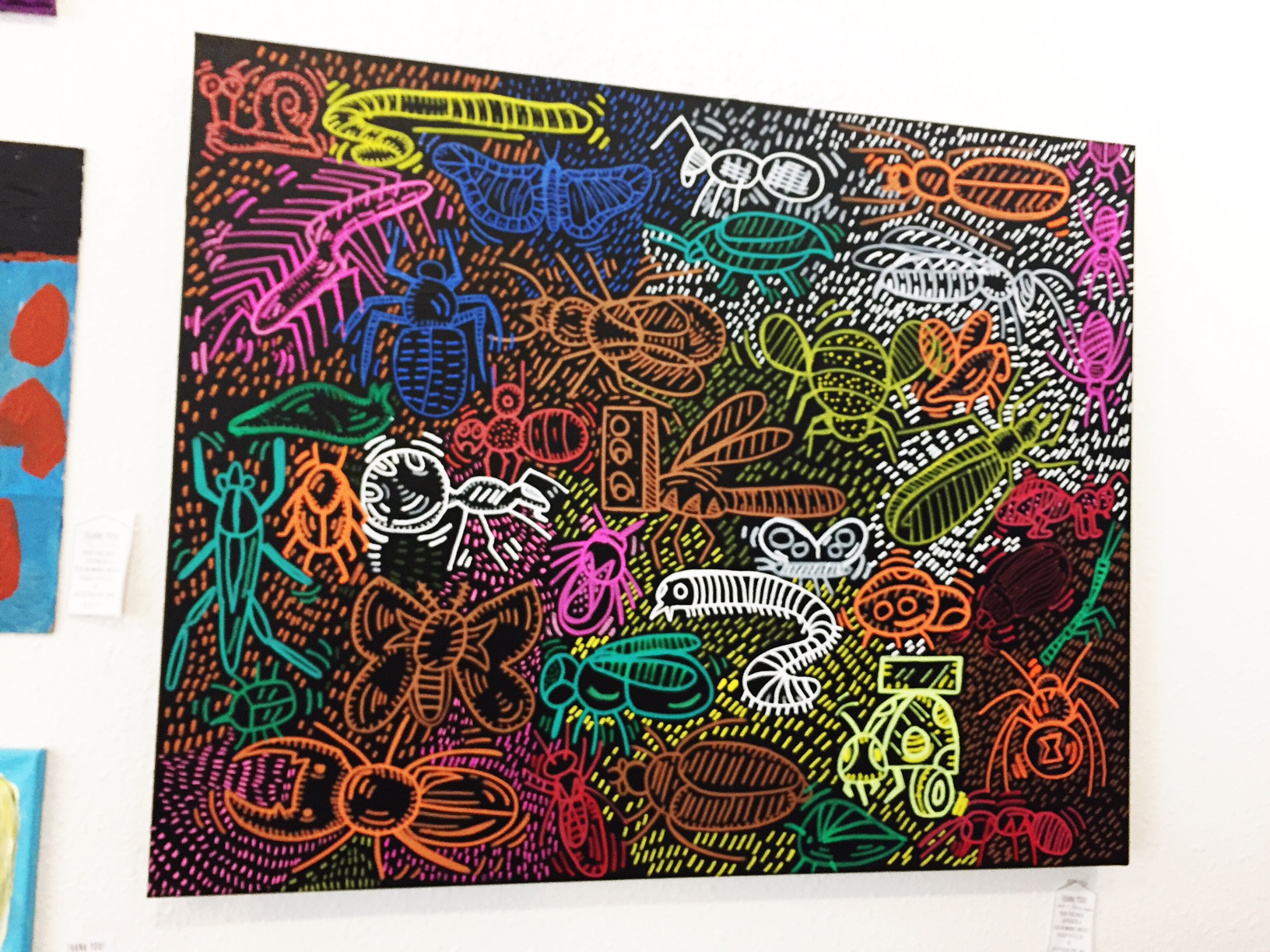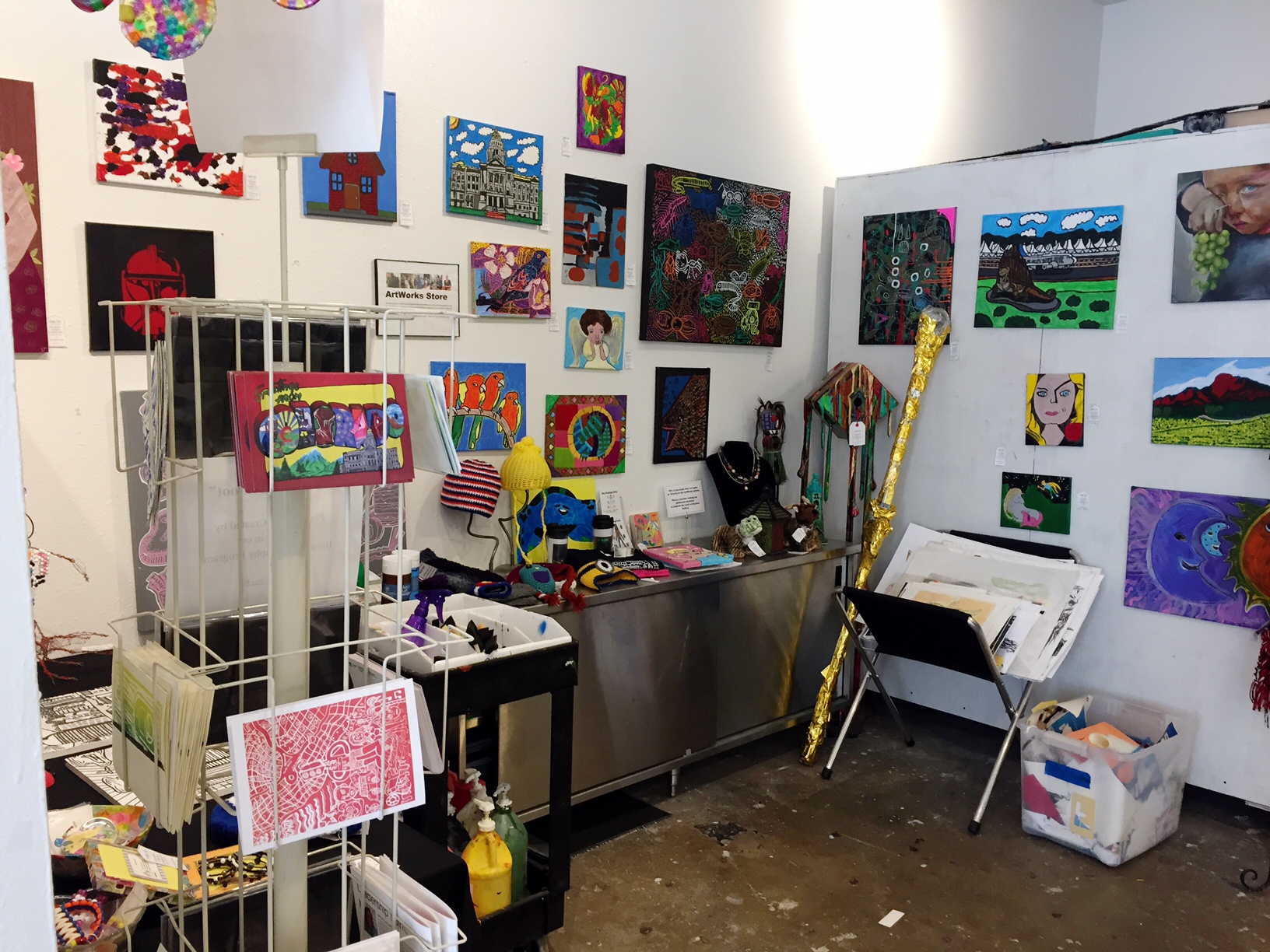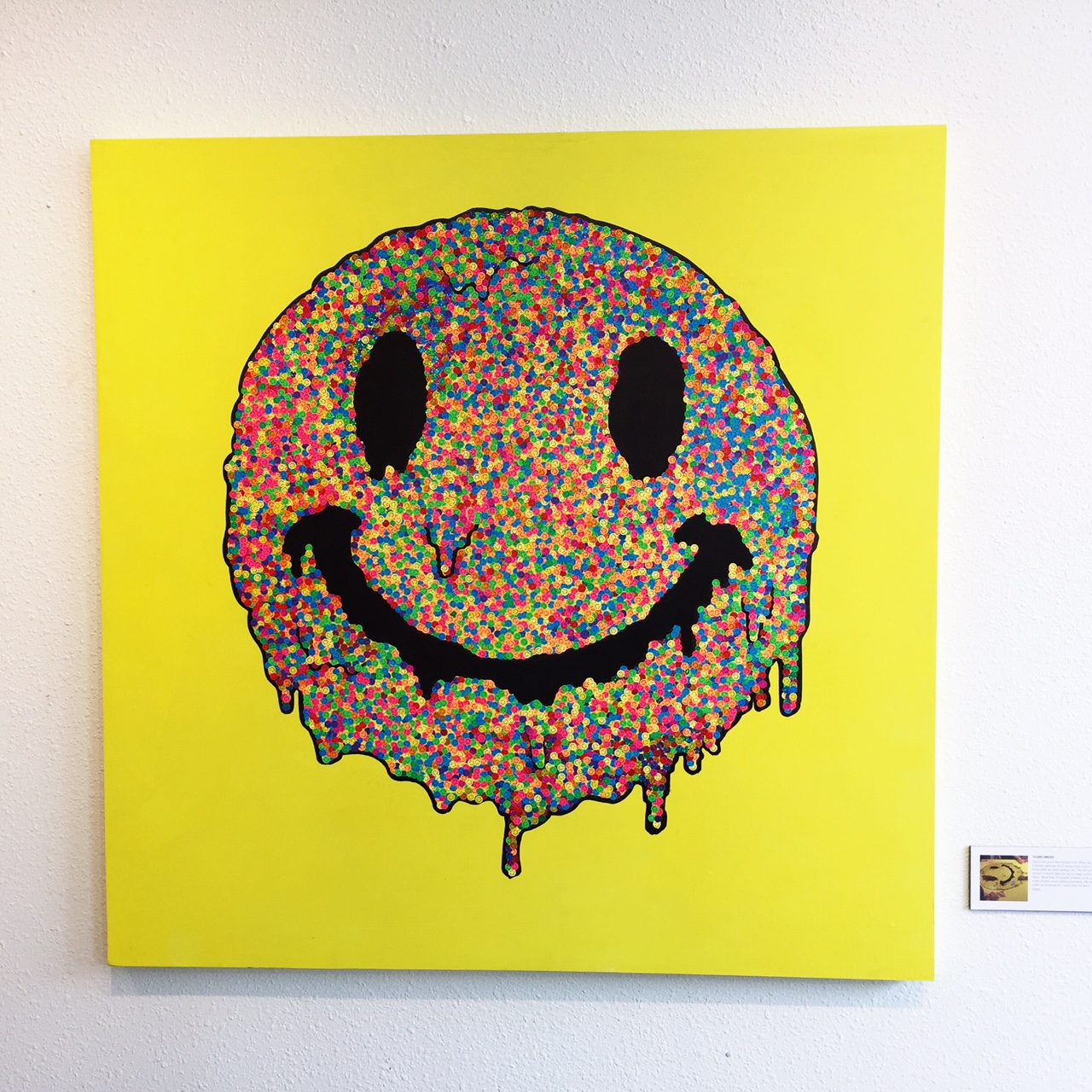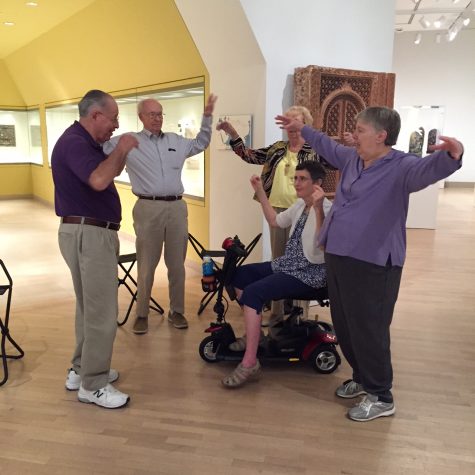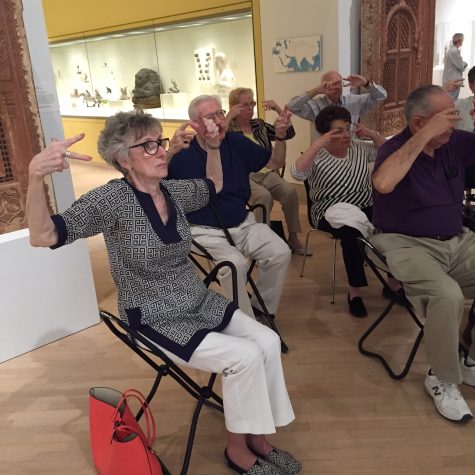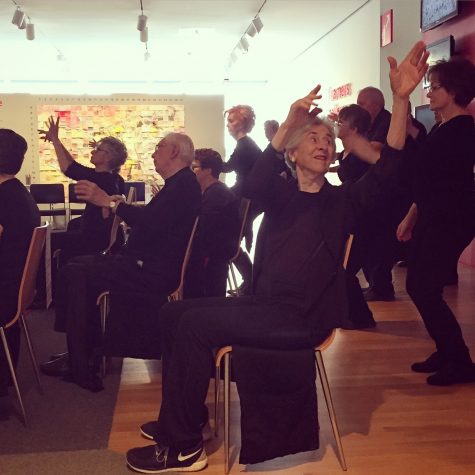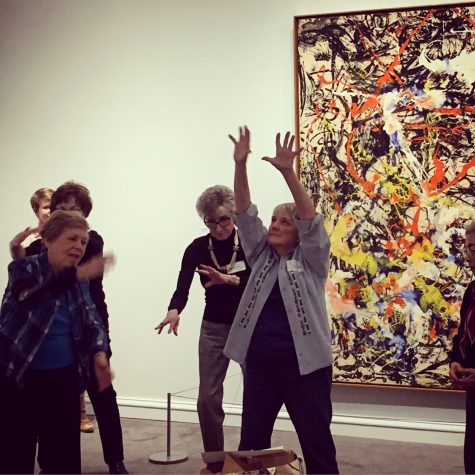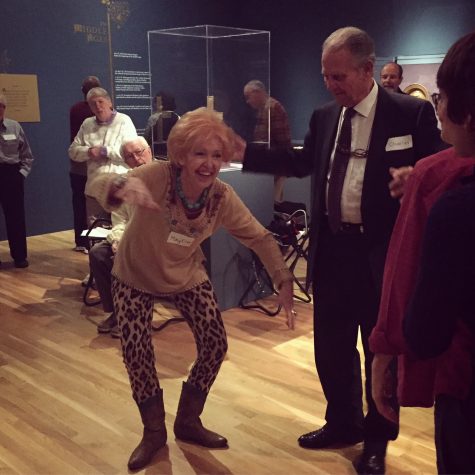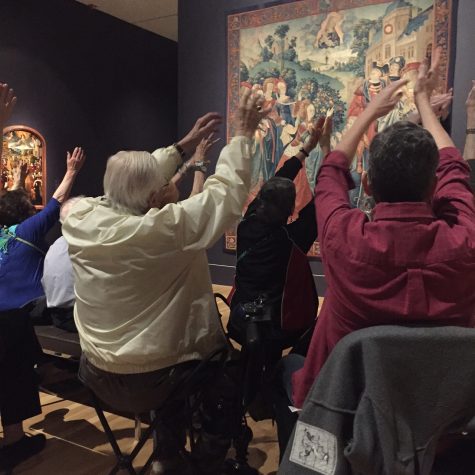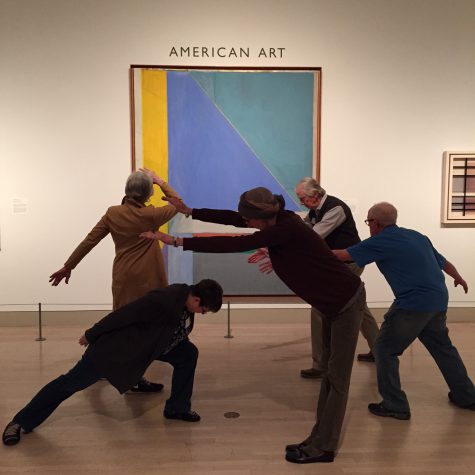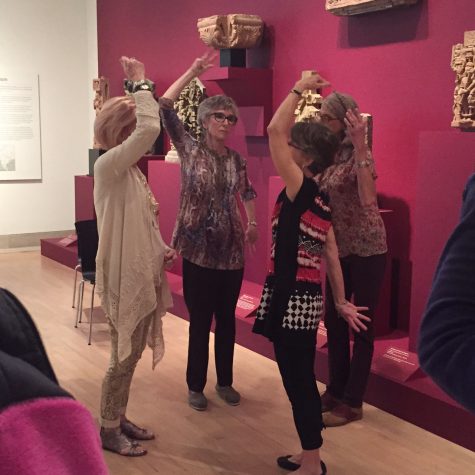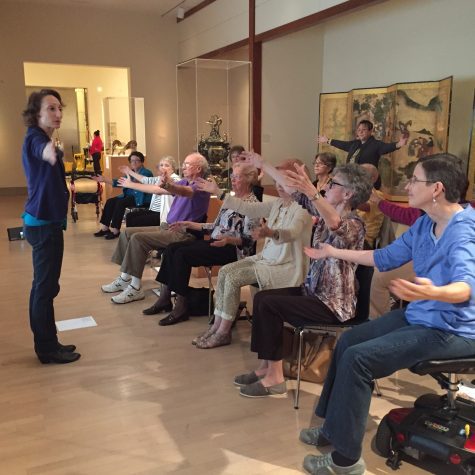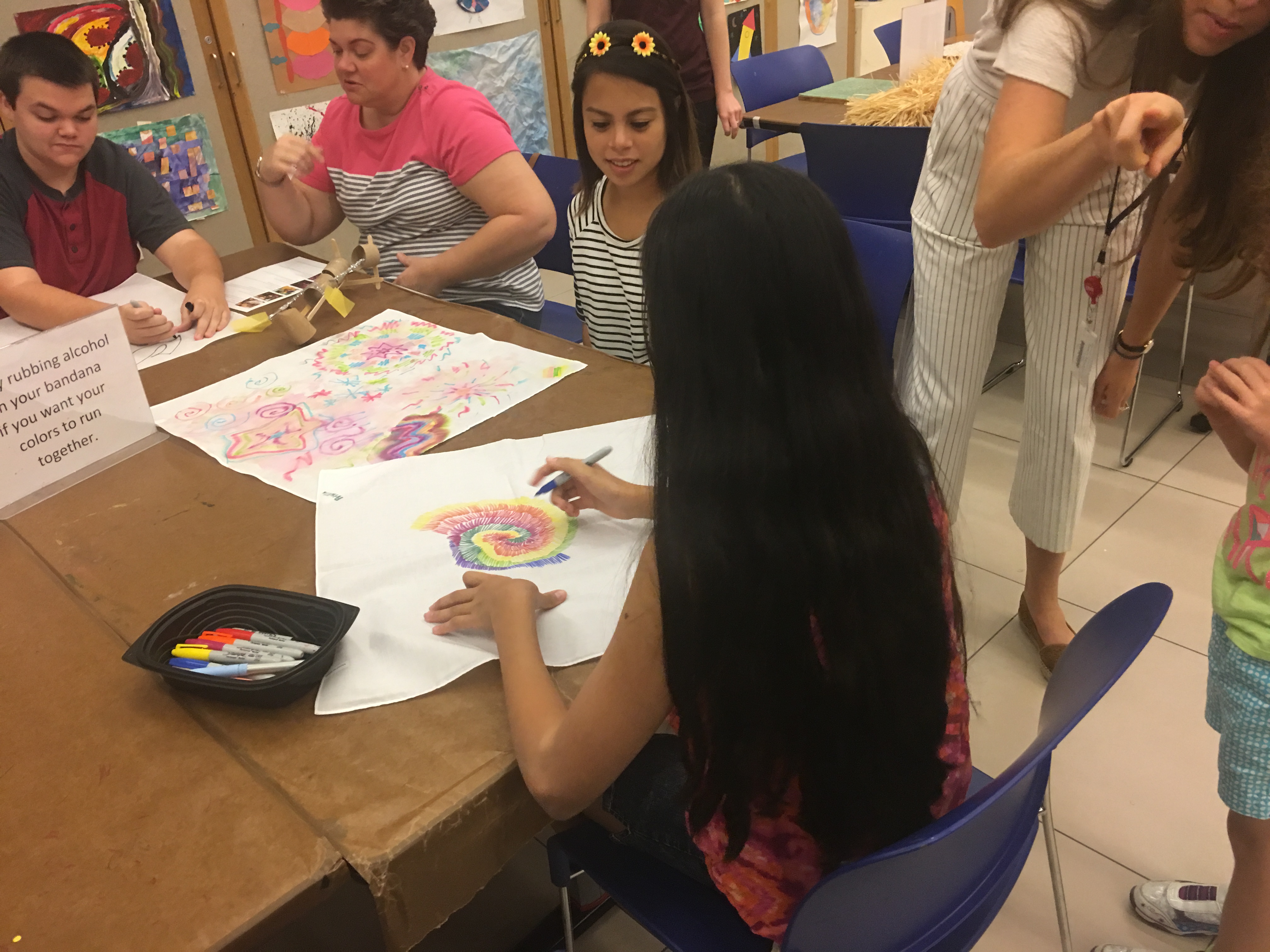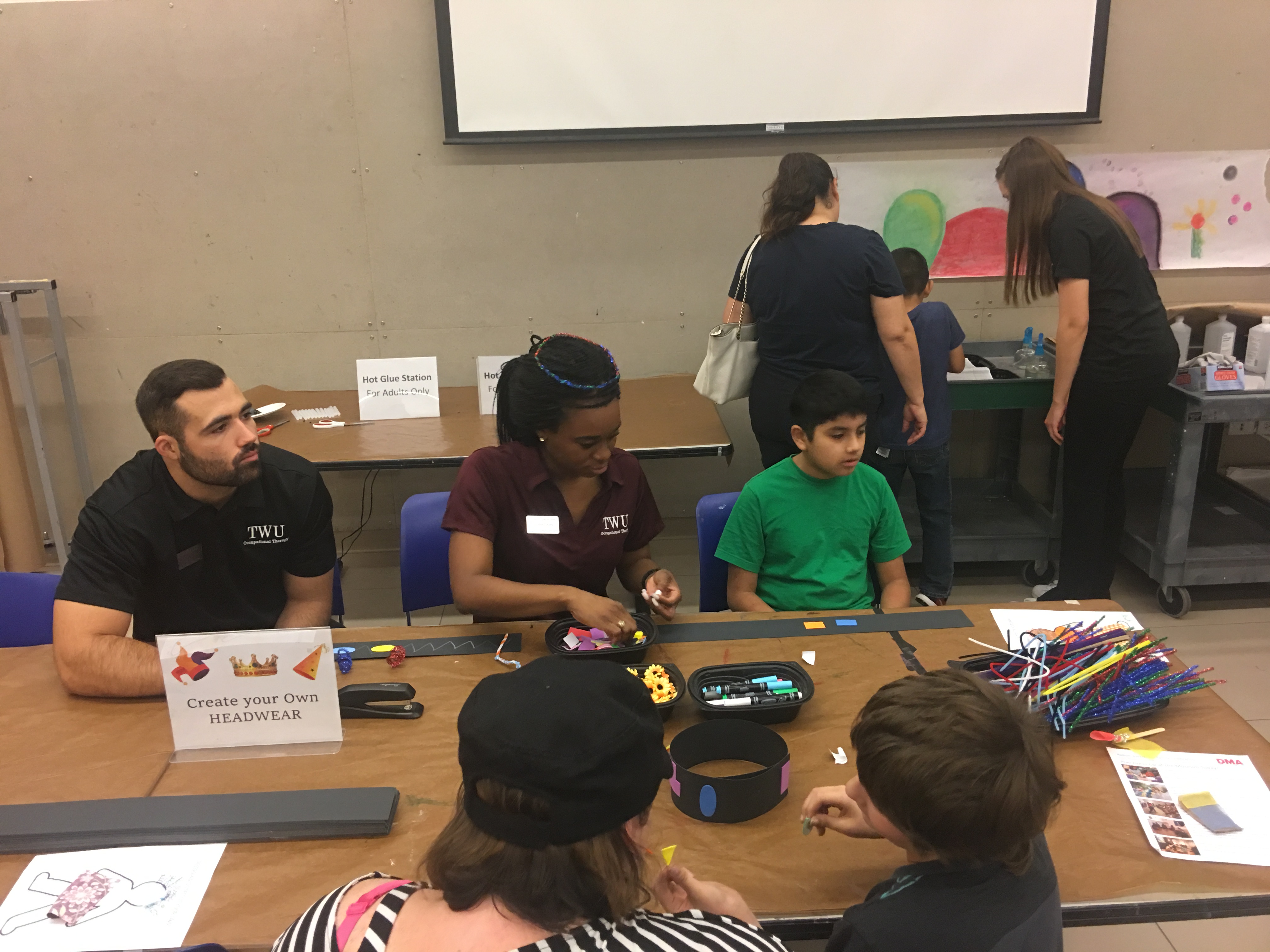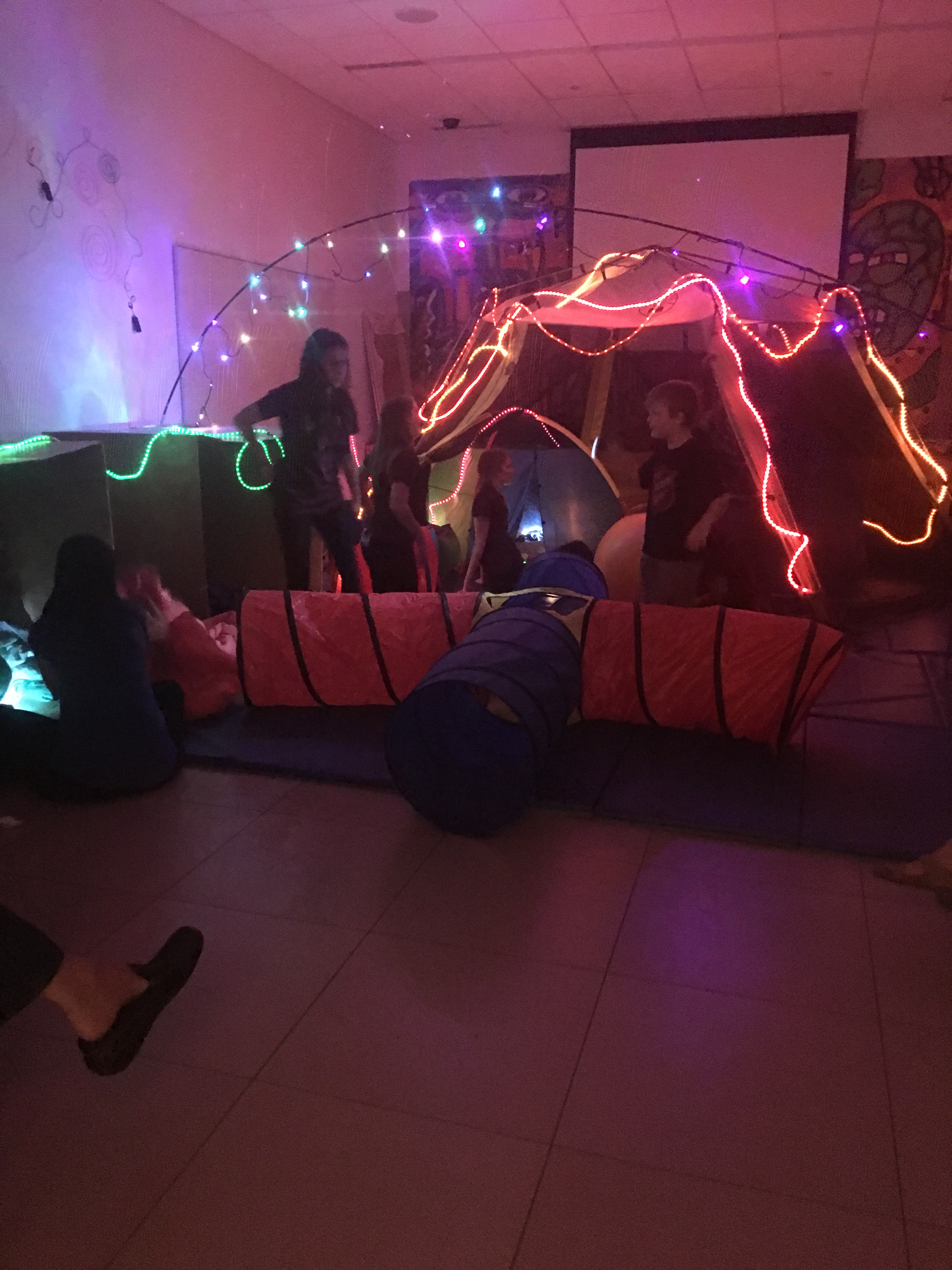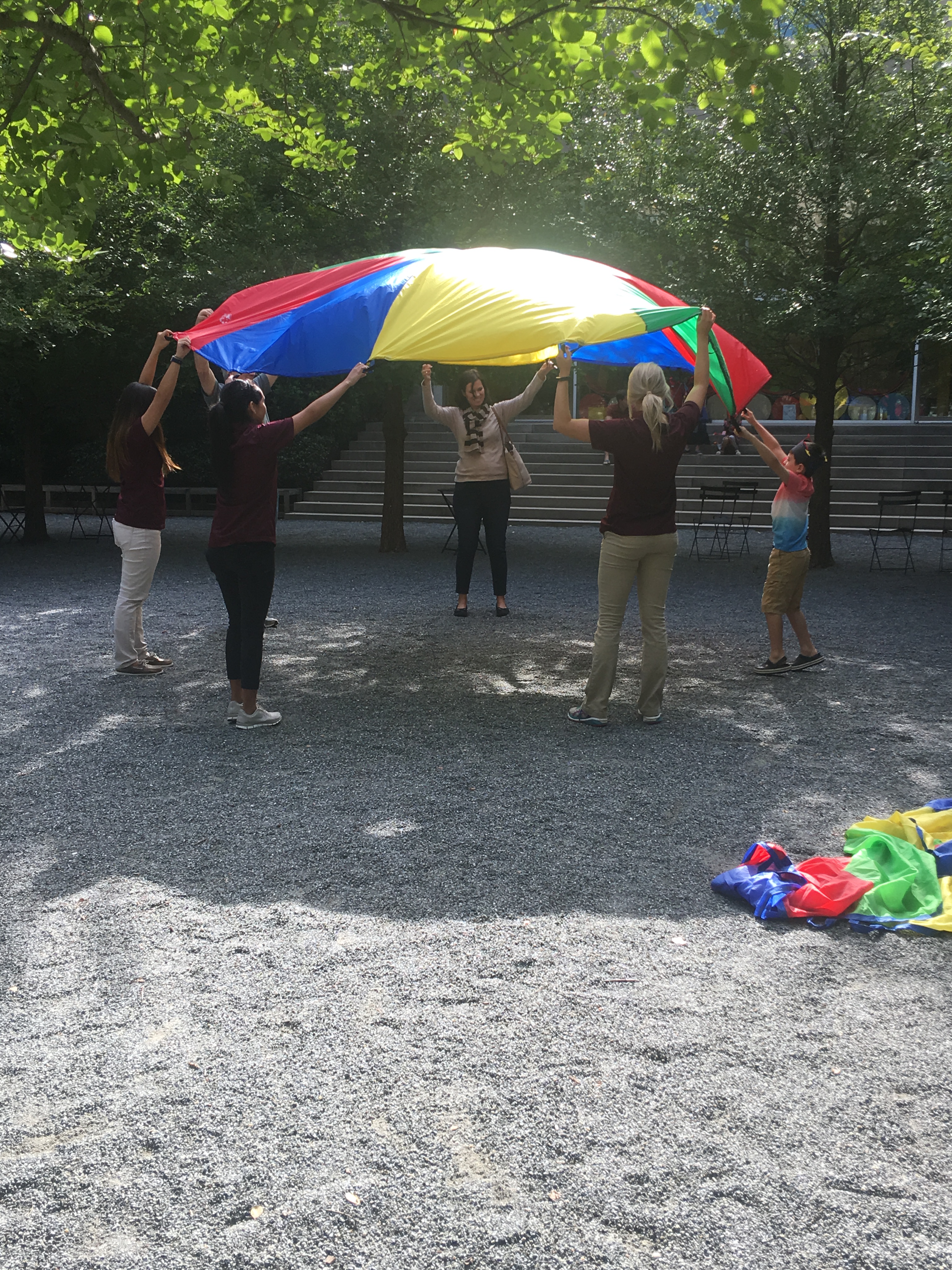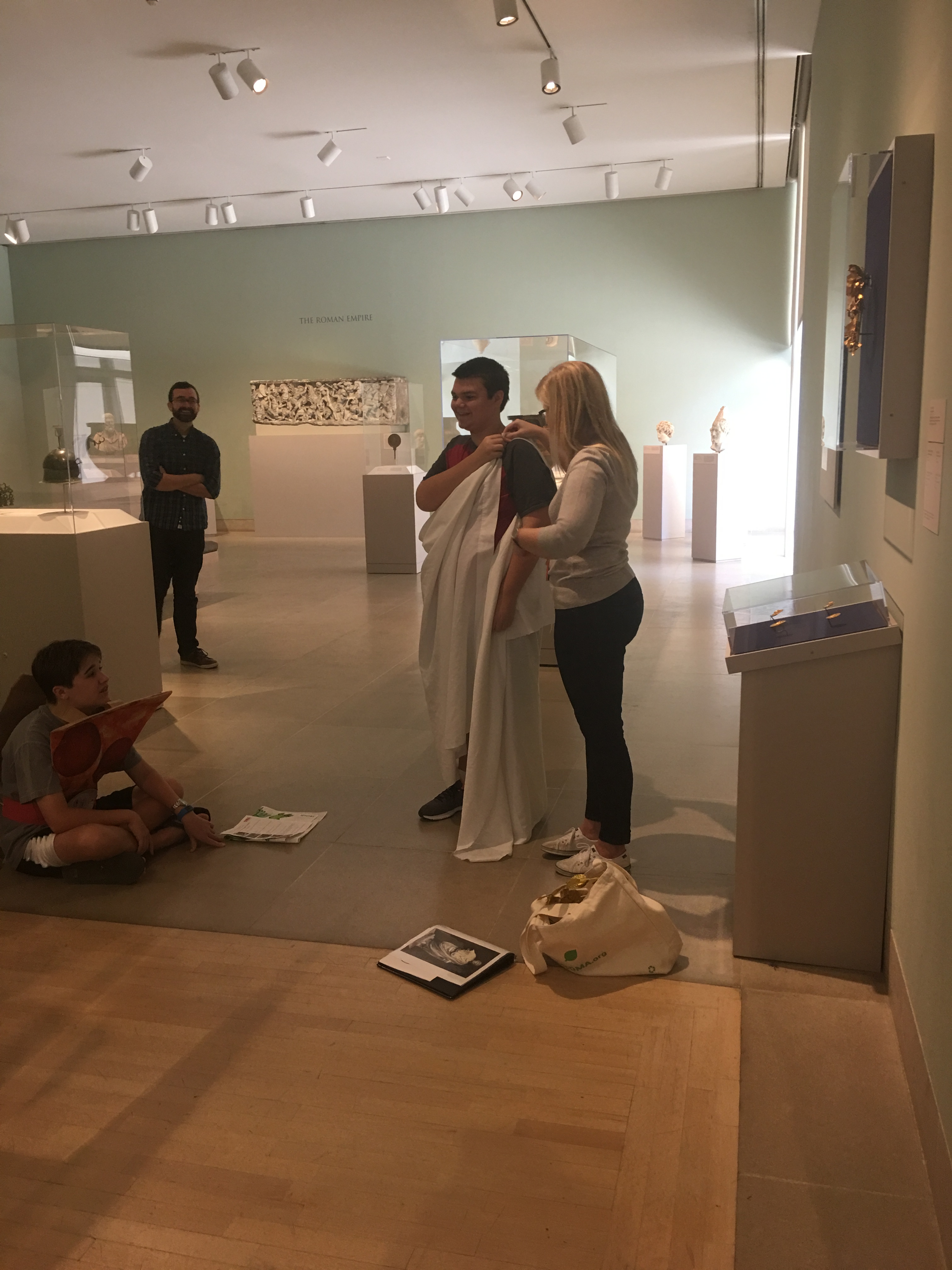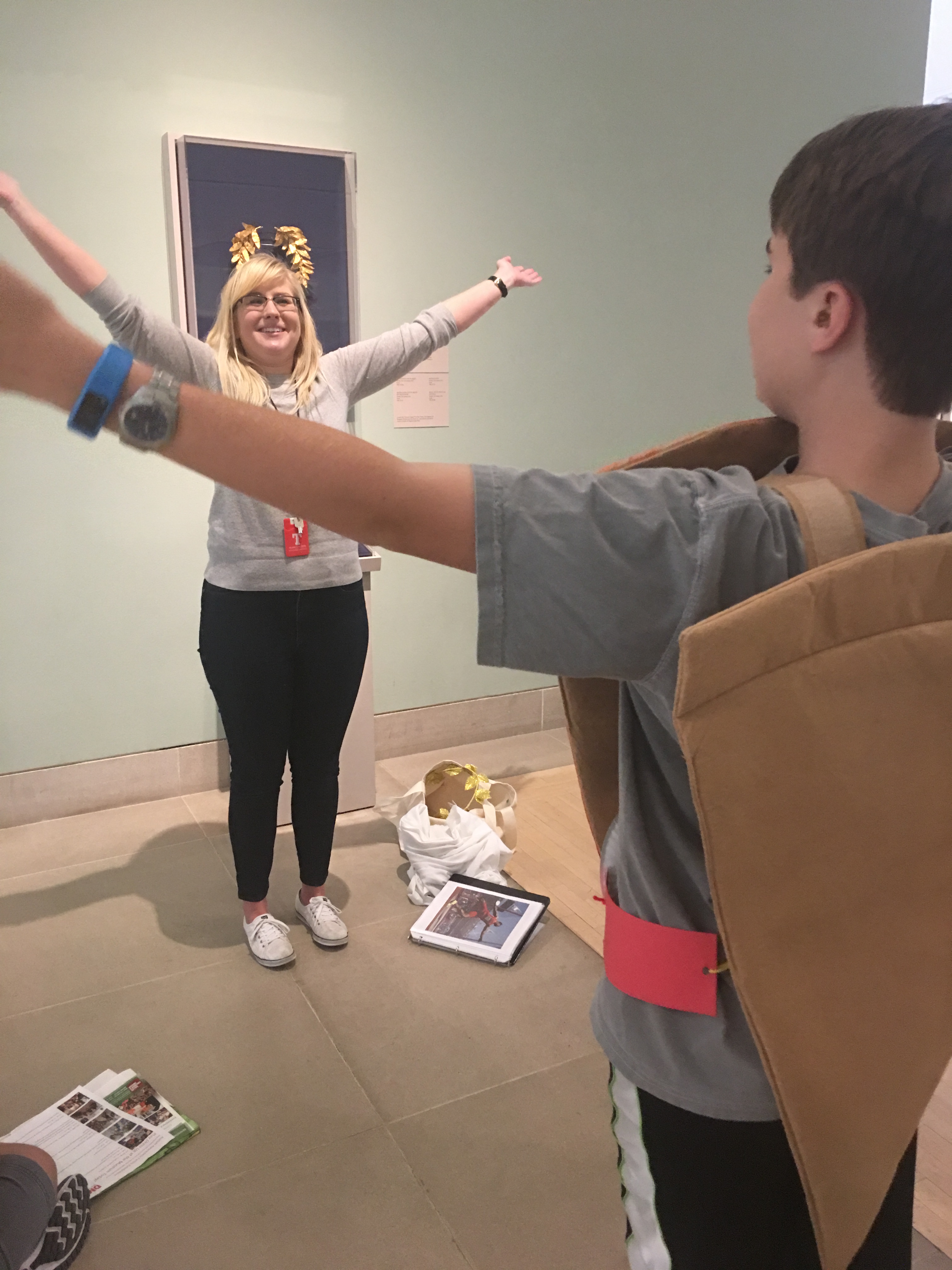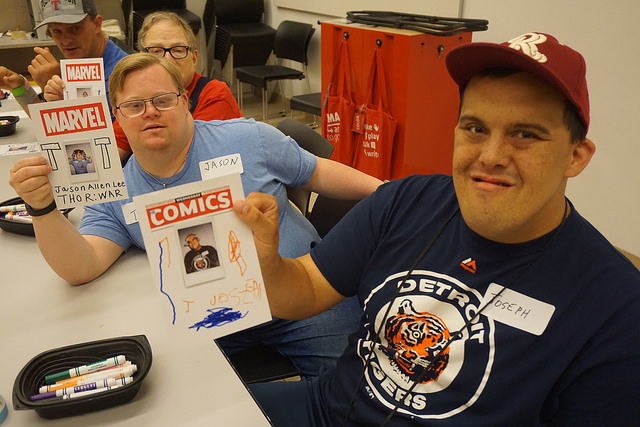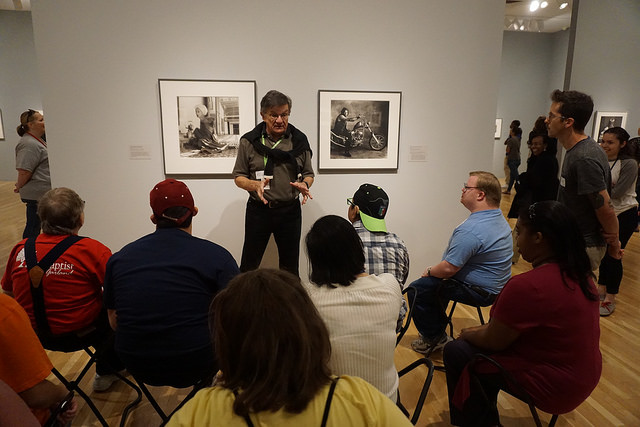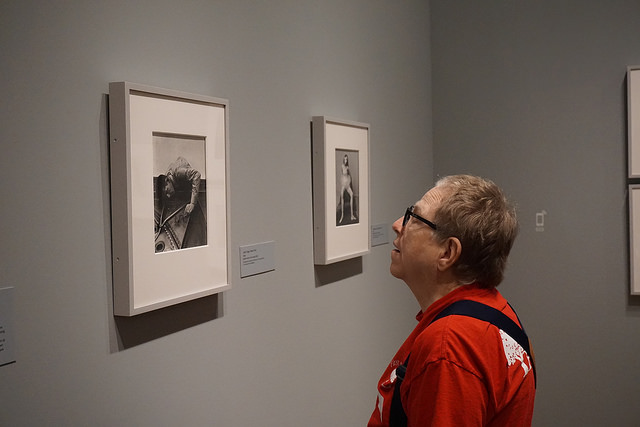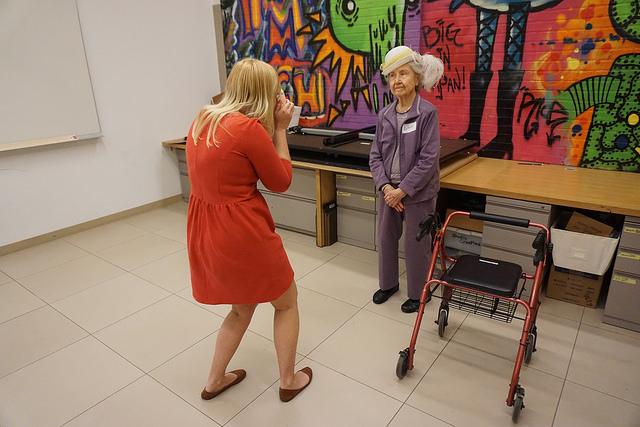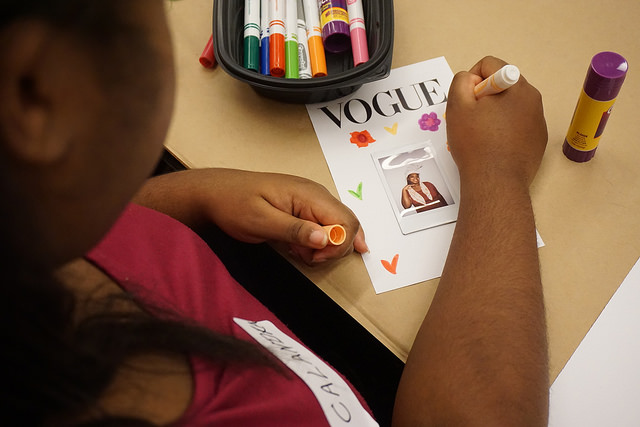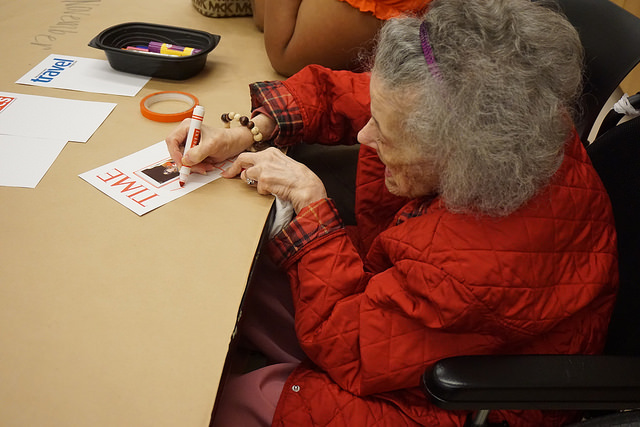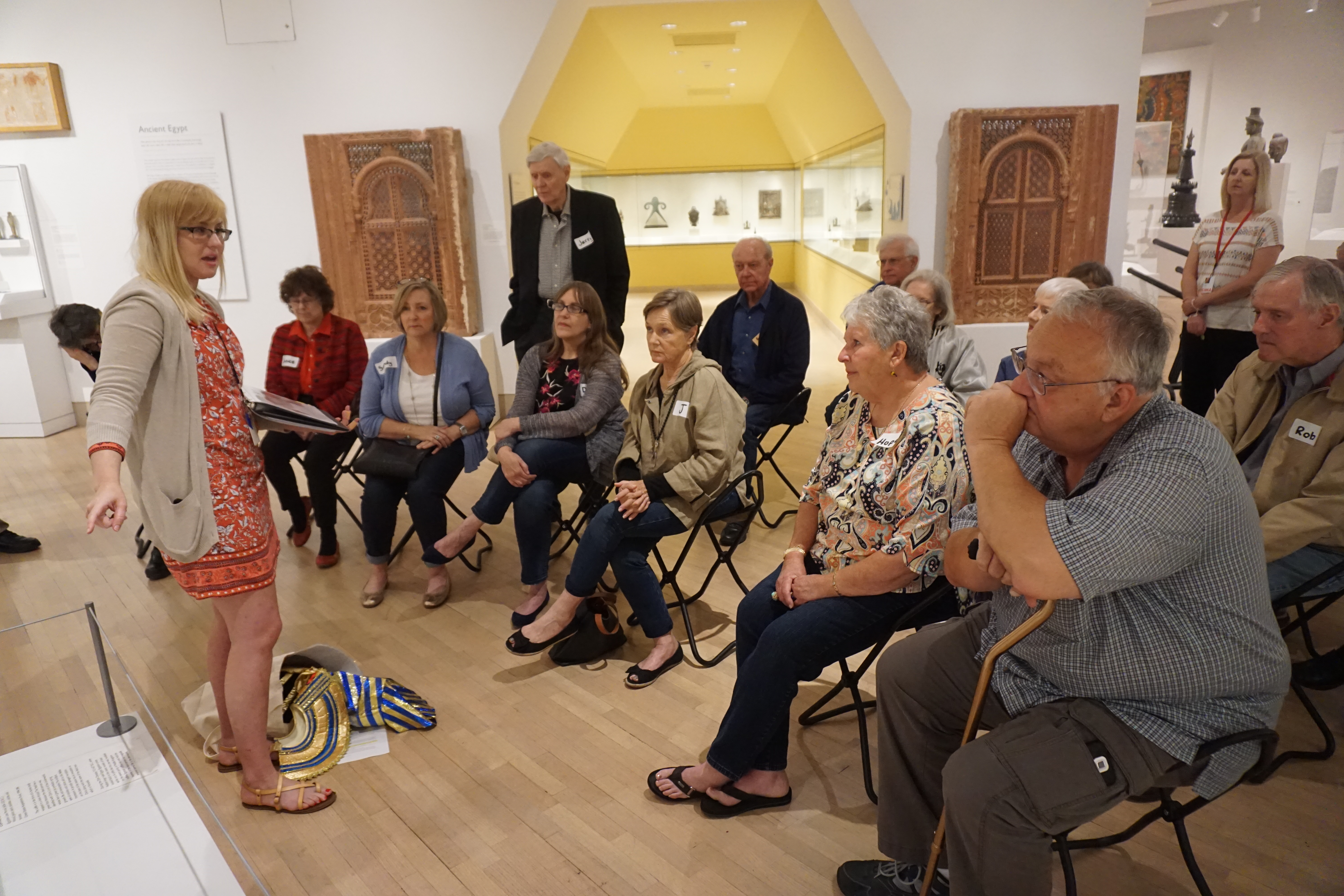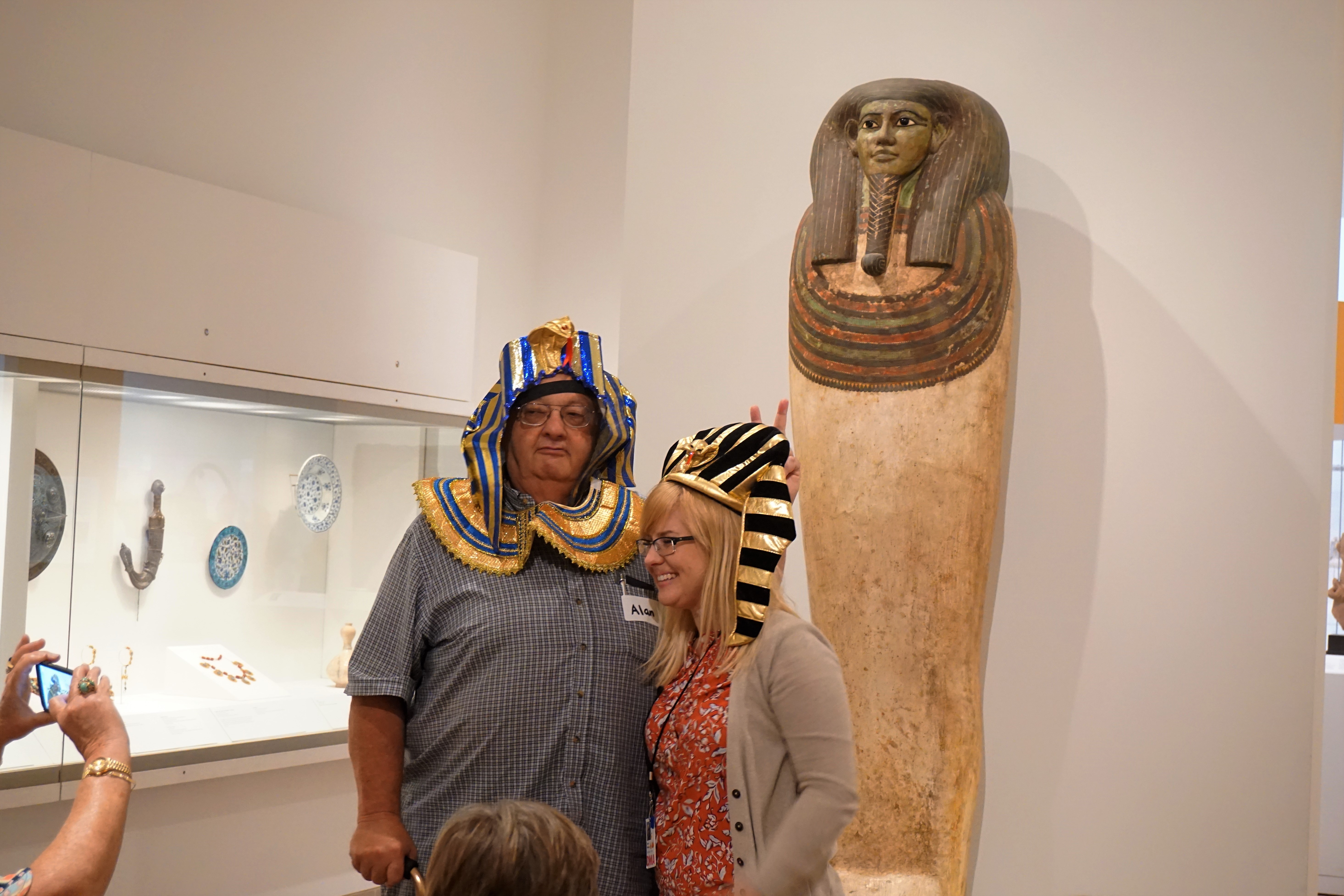Today we are saying goodbye to a dear colleague and friend. Danielle Schulz joined the Education department three years ago and has charmed us all with her wit, dedication to excellent teaching, and bubbly personality. She is moving on to a new position at the Denver Art Museum, so we want to send her off with happy memories of all that she has accomplished here. And since she has spent the majority of her time in one classroom or another, we thought it only fitting to say goodbye with the best kind of school farewell we know–the yearbook Most Likely Awards.
Danielle’s Superlatives
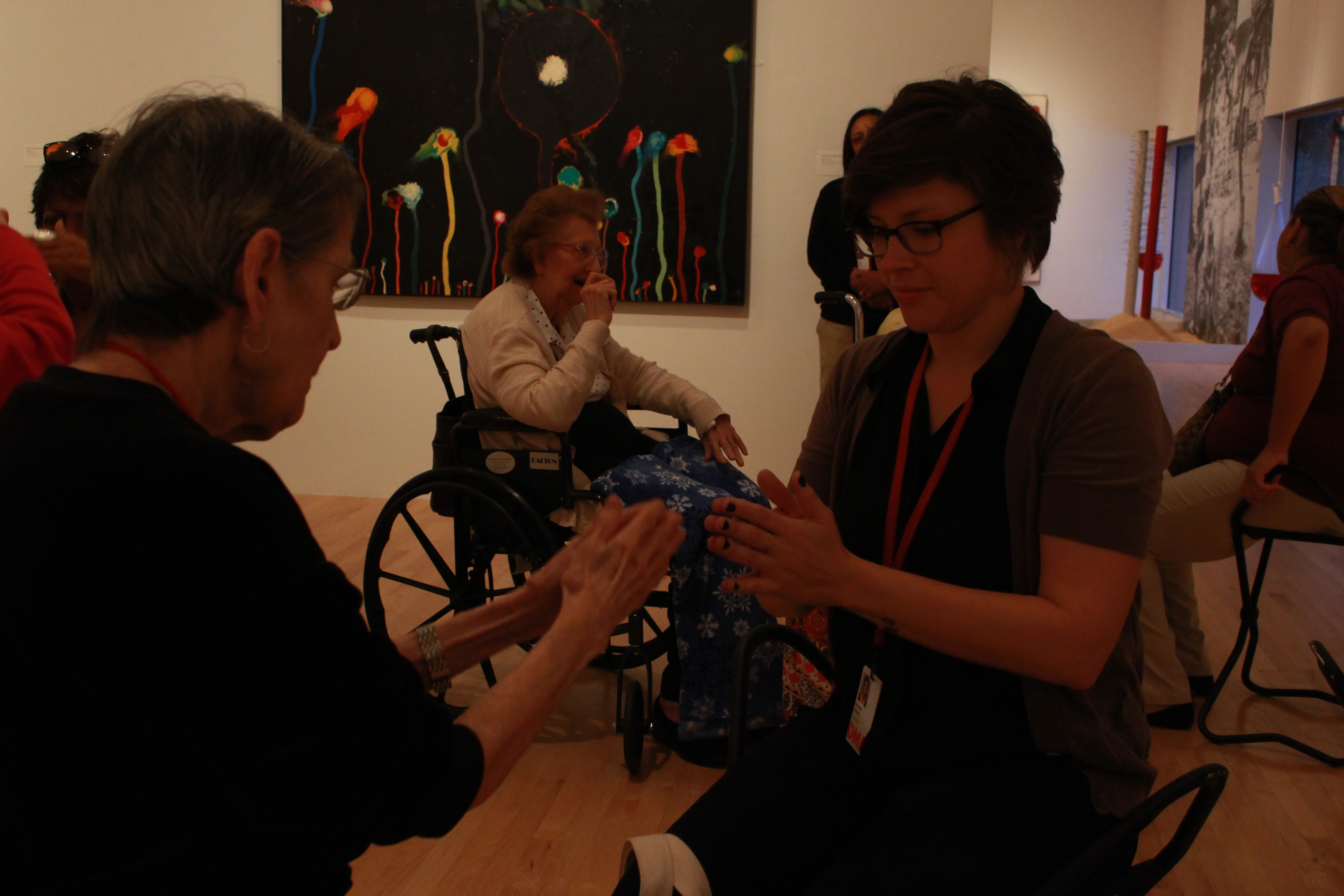
Most Likely to Put the Able in Abilities
From using pool noodles with participants in wheelchairs to mimic movements in paintings, to cross-stitching astrological signs with visitors with Alzheimer’s disease, Danielle always went above and beyond to find an extraordinary way to connect to those with special needs. Danielle has a gift for listening and relating to visitors of all abilities and uses her talent to figure out how best to teach about artworks.
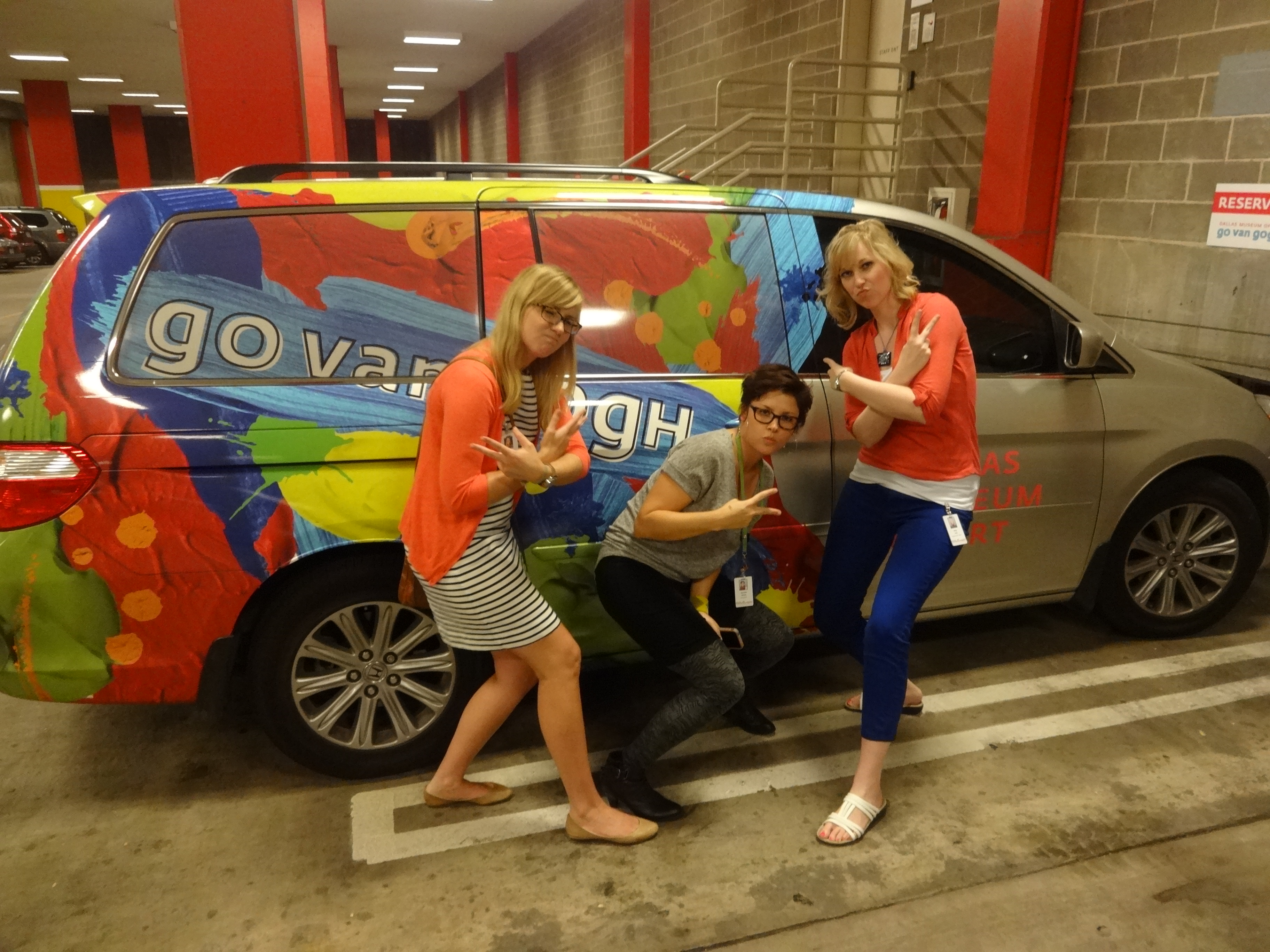
Most Likely to Outsmart Little Rascals
While teaching an outreach lesson at a local school for the Go van Gogh program, Danielle led a discussion with elementary students about the different materials artists use to create art. With a little boy sense of humor, one student offered up “poop” as a suggestion, to which Danielle deftly replied, “Some artists do use refuse to create art” without missing a beat!

Most Unusual Amazon Shopping Cart
As the lead staff for coordinating the daily come-and-go for our busy summer art camps, Danielle supervised summer interns, set up studios for teachers, emailed parents, made parking arrangements, and all kinds of less-than-glamorous tasks that make summer camps smooth sailing. And oh the supplies–no matter what crazy material a teacher throws at her, Danielle can find it. Hundreds of plastic bags? Check. Toy motors? No problem. Lamp shades? Done. If you judge her by her Amazon shopping cart, you’ll know that this is one crazy, creative, out-of-the-box-thinking girl.
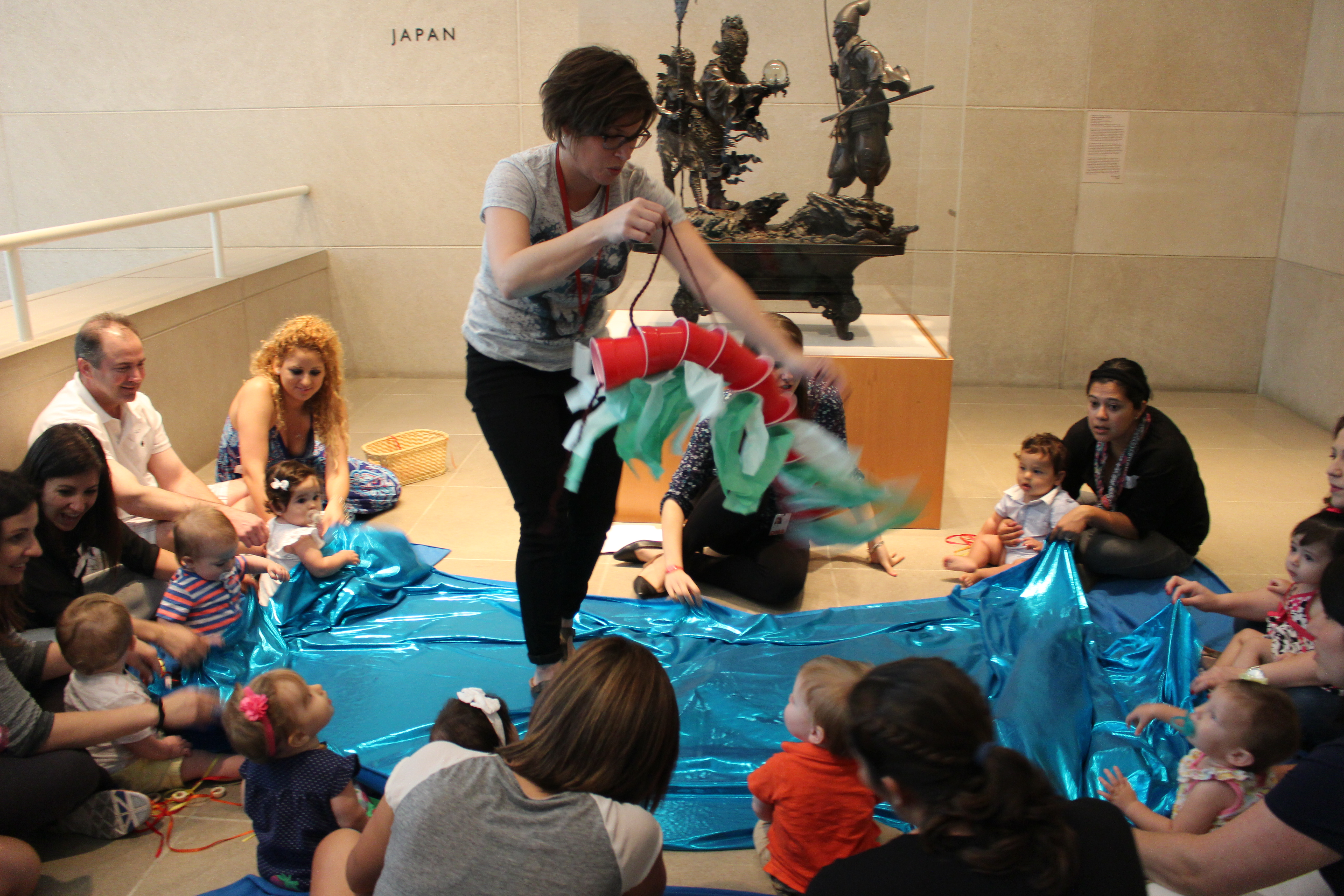
Most Likely to Go the Extra Mile
Danielle is a phenomenal teacher, whether she’s performing for a group of babies, leading a group of high school students through the galleries, or having a conversation with a senior group from a care facility. She always goes the extra mile, searching for ways to really connect with visitors, considering their needs, and adding in her trademark sense of humor. I’ve seen her perform the role of “Dragon King” for Art Babies class, wear a taco costume for a Late Night superhero tour, and bring in a treasured quilt from home for an access program–all in the name of helping visitors enjoy their experiences with art.
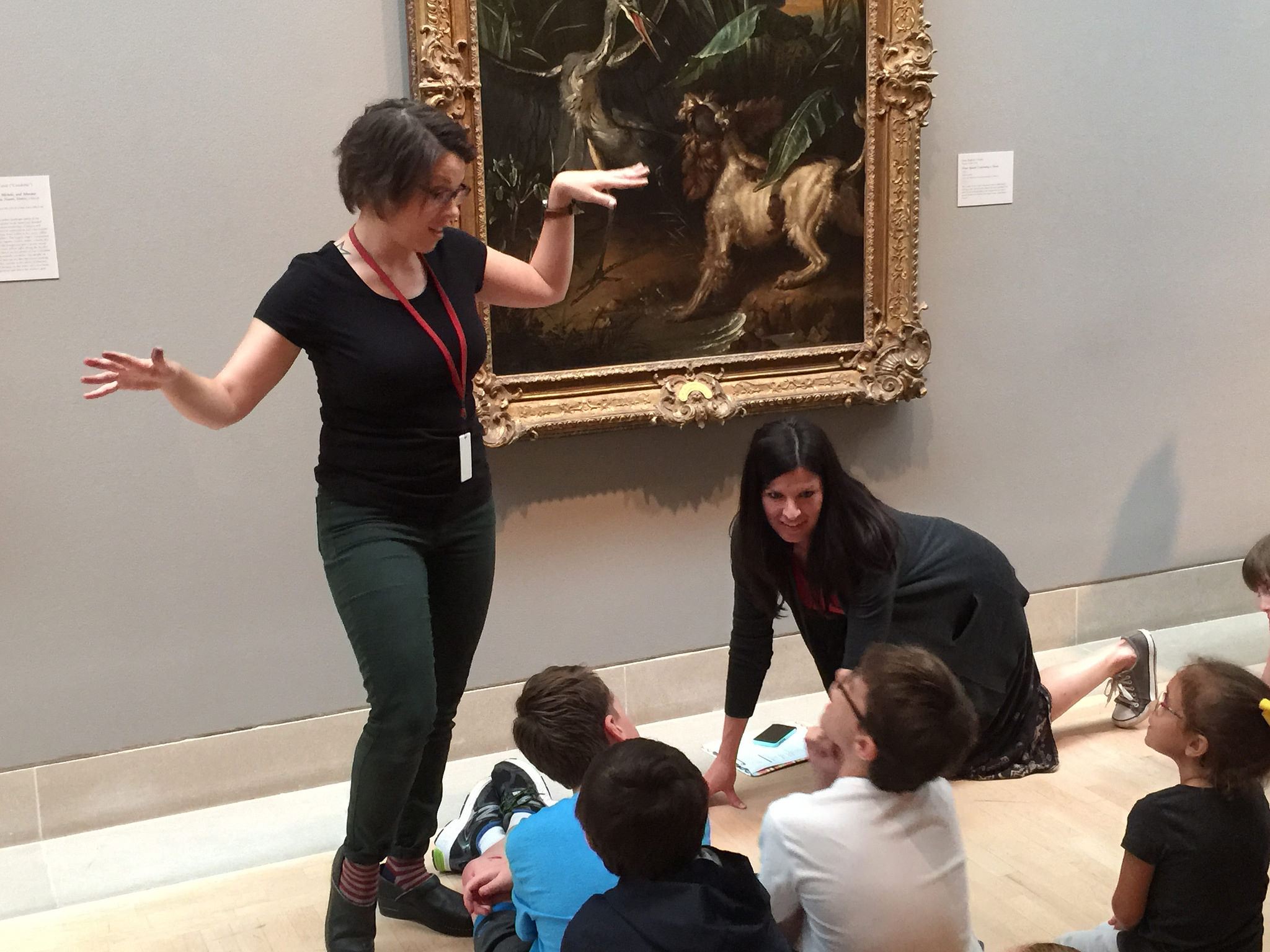
Most Likely to Make an Award-Worthy Cameo in a Whimsical Grant Video
Did we mention she acts? Several years ago, Go van Gogh went for a BIG opportunity that required us to make a short video selling our wonderful outreach program. Knowing that we needed to reeeally stand out to compete, we worked the whimsical angle, and Danielle spent an afternoon excitedly jumping out from behind artworks on camera. I don’t know how many times she jumped out from behind Nandi the Bull in our South East Asian galleries, but I do know by the time we were ready to submit our video, we had a fantastic (and definitely whimsical) representation of our program. The video went on to earn us $10,000. Without Danielle’s acting skills, teaching prowess, and overall great ideas and energy, we wouldn’t have had a shot. Someone get this woman an agent!
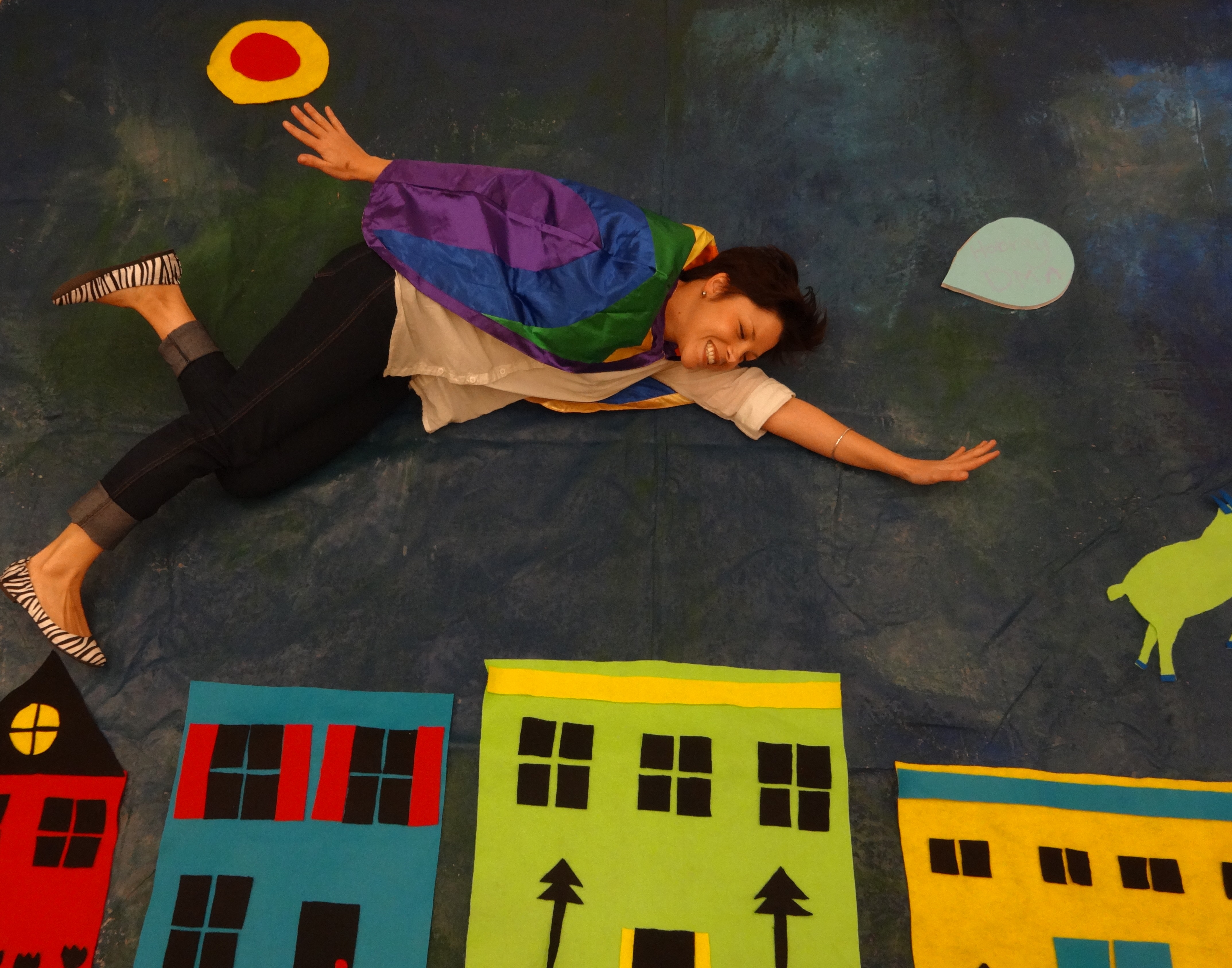
Most Likely to Soar as High as the Stars
Danielle’s passion for teaching with works of art and her love of people will propel her as high as her dreams will fly, and we wish her the best of luck at the Denver Art Museum.
We are going to miss Danielle more than we can say, but are so excited for the new adventure that awaits her in the Colorado mountains.
Leah Hanson
Manager of Early Learning Programs

